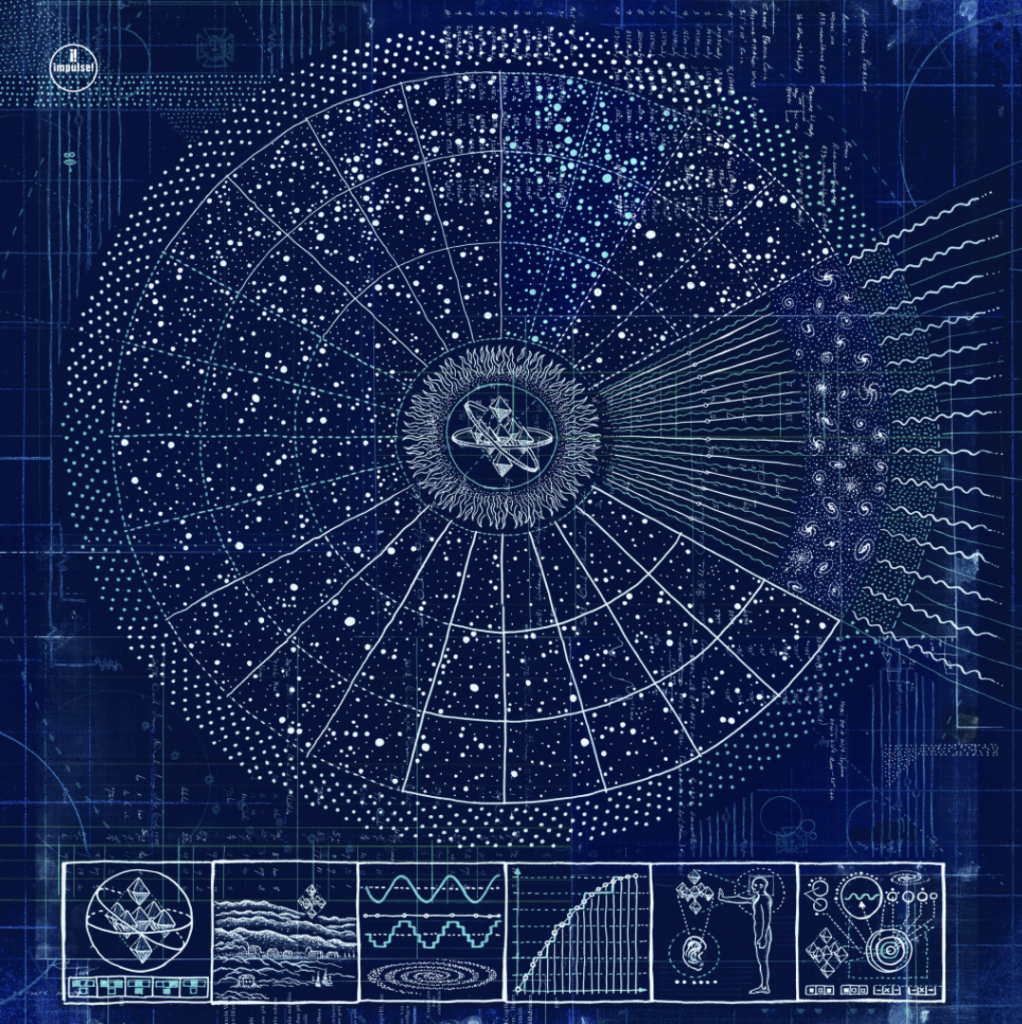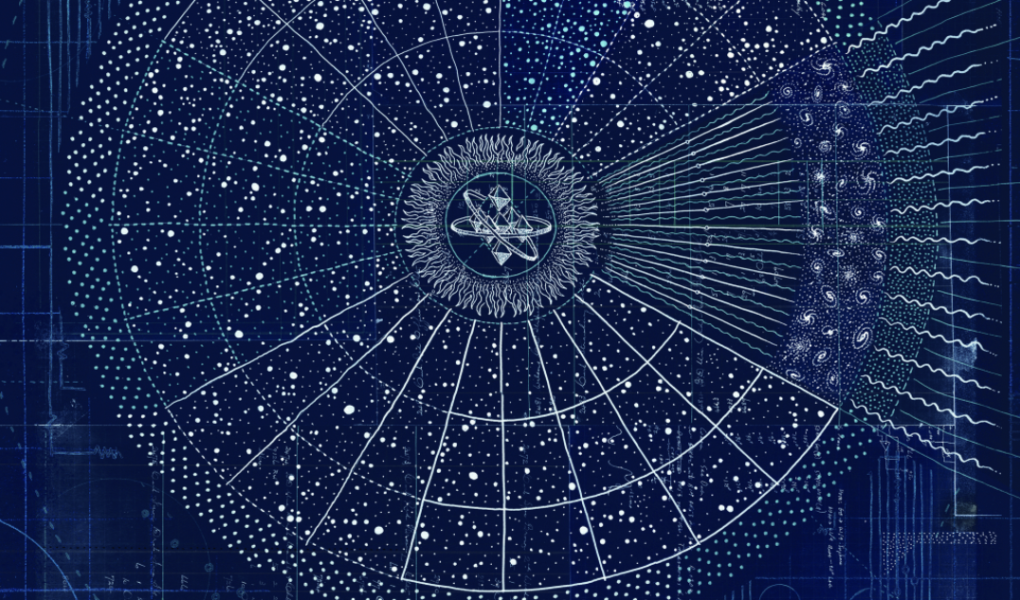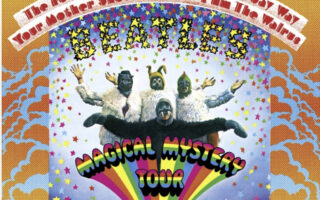The Comet Is Coming, Hyper-Dimensional Expansion Beam ( Impulse 23 Sept 2022)
The Comet is Coming comprises Danalogue on Rolands, Betamax on drums and percussion, and Shabaka Hutchins ( King Shabaka) on tenor saxophone.
Since their entry into what was sometimes a disingenuous jazz scene, The Comet Is Coming has brought a reality, a street-centered, squarely-planted surety to the jazz scene, engaging with youthful jazz audiences as much as with those who have been around jazz for decades. Connecting while still in the learning phases of their respective careers, the trio has found inspiration and encouragement to steer a path whose finish is as yet unknown. The Comet is Coming has created jazz that demonstrates the far-reaching stretches of the genre. We have needed a groundbreaking group for so long, without over-hyped expectations, and in The Comet is Coming, we finally have it.
‘Hyper-Dimensional Expansion Beam’ is the third album from The Comet is Coming, and the music reminds us of the lyricism of music, its power, and deep, resounding vibes. Jazz has always reflected our times, and this album does so admirably.
The intention is clear from the visceral, relentless pounding of the opening track, ‘Code.’ In The Comet is Coming, there is no leader, no one sound which overrides the others. This is no vehicle for a soloist but a collaborative album in terms of ideas and musicianship, demonstrating that old jazz values can easily translate into modern records.
The Comet is Coming has found themselves a perfect trio combination. Their 2016 debut album ‘Channel The Spirits,’ gained a Mercury Music Prize nomination and earned them a well-deserved place in the London jazz circuit. Their past recordings, including ‘Channel The Spirits’ and ‘Trust In The Life Force,’ proved preparatory works for ‘Hyper-Dimensional Expansion Beam,’ and this album finds the trio emulating a sense of being comfortable, powerful in their place, and utterly aware of their uniqueness.
‘Code’ opens the album and creates a picture from the unrelenting rhythm built over a syncopated five-note pattern. Shabaka’s enigmatic, intuitive sax notes are creatively underpinned by keyboard and percussion. Shabak’s ability for pinpoint rhythmic patterns is emphasised in the final third when the sax powers out its voice. The sound is pounding, relentless, intense, and wholly uplifting.
‘Technicolour is explorative, sensory, and vibrant with a rising intensity reflecting the music’s spinning essence. The rasping yet tuneful sax tones brilliantly with the echoed, multi-chorded accompaniment and the ascension towards the end sees the Roland rise somewhat eerily out of the ether.
‘Lucid Dreamer’ is rhythmic, with gentler sax and meandering keys which glide and blend in rivulets of the otherworldly landscape. Shabaka demonstrates a softer side but listen to what is going on with the drums. Disharmony is in there. The listener senses a sort of make believe land into which the music leads, a delightful scene with harmony and peace.
‘Tokyo Nights’ is a short reverie of just under a minute, while ‘Pyramids’ is a thundering, rolling number with the synthesiser and rums working to create a woven platform of depth, over which the sax sings and soars. A tremendous number with gorgeously worked rhythms and a stonking sax part.
‘Frequency of Feeling Expansion’ is aptly named because the track develops into ever-widening circlets of sound, with sax tempered in sound and input, Shabaka taking the melodic lines while allowing the patterns and intricacies of the synth and percussion to sound out.
‘Angel of Darkness’ is a trip into the ethereal, with synthesised noises and vocal effects, an almost wing-like rushing, and the sax of Shabaka entering after the minute marker to create a vibrating, rising call, which lifts the listener into the dream-like trance of the music. Beautiful yet unnerving, this track is standout for its blending of sounds. The sax fades to synth, which fades to percussion before the sax relentlessly pounds the same rhythmic notes over the eerie backdrop of synth and drums until the complex rhythms emerge. The deeply textured structure of this number is quite beautiful in context and form.
‘Aftermath’ is an intricate number with Shabaka this time on the Japanese shakuhachi flute in duet with the synthesiser, reflecting different cultural instruments and how ancient can blend with the more recent to create something novel and exploratory. A riffling bass line from the synthesiser works to maintain the integrity of the number – subtle yet essential- and emphasizes the very atmospheric sound of the shakuhachi.
‘Atomic Wave Dance’ finds Shabaka on sax, running a fast-paced race with the drums, tempered by the synthesiser at times, and at others, the synthesiser leads them in return to the frenetic speed. The true essence of the trio can be felt here, the track is a delight. Joyful and forceful at the same time.
‘The Hammer’ is another relentless, rhythmic number, with the synthesisers and drums laying down the foundations upon which the sax builds its glory. Shabaka’s mastery of the power sax soloist tempered by the presence of intuitive synth and drums is evident. While it is tempting to follow the sax line, on another listen, follow the snyth, and on the third, the drums before you hear it truly as a whole. Glorious music.
‘Mystik’ closes the album, and it is a track that deftly combines elements of free playing, traditional old-style sax and drums, and entirely up-to-the-moment sounds.
In this album, the big sound is there, and the shuddering strength of the rolling musical muscle is still flexed, but it is honed and tempered more. There is control, and the musicians know precisely what they are doing. Coupled with expert engineering, this is an album with broad commercial appeal yet will also find a place in the homes of jazz lovers alongside those who prefer modern music.
There is an understanding here of connection, intent, and purpose. Far more than in previous recordings, the listener is involved, is present in the music, and that, more than anything, is just about perfect for our time.




